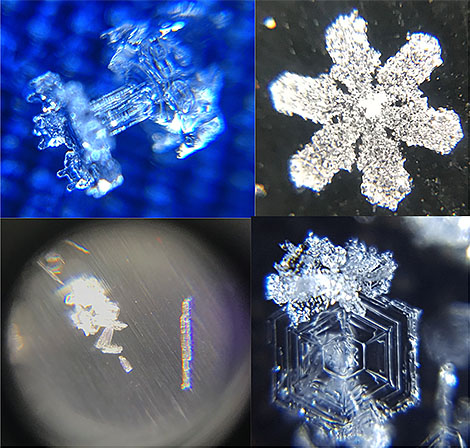Undergrads at Penn State recently took to their cellphones to mingle with and snap pics of tiny snowflakes to reinforce meteorological concepts. The class, called “Snowflake Selfies” and described in a new paper in BAMS, was designed to use low-cost, low-tech methods that can be widely adapted at other institutions to engage students in hands-on field research.
In addition to photographing snow crystals, students measured snowfall amounts and snow-to-liquid ratios, and then gained meteorological insight into the observations using radar data and thermodynamic soundings. The goal of the course was to reinforce concepts from their other undergraduate meteorology courses, such as atmospheric thermodynamics, cloud physics, and radar and mesoscale meteorology.
As a writing intensive course at Penn State that meets the communication skills requirement of the AMS guidance for a Bachelor’s Degree in Atmospheric Science, “Snowflake Selfies” also was designed to help students communicate meteorological science. Students shared their observations with the local National Weather Service office in State College and also wrote up their work in term papers and presented their pics and findings to the class.

Of course to have such a class, you need snow, and “the relative lack of snowfall events during the observational period” in winter 2018 was definitively a challenge for students, the BAMS paper states. Pennsylvania’s long winters often see many opportunities to photograph snow, but the course creators caution that perhaps a longer observational period is needed in case nature doesn’t cooperate. It also would allow students enough time to closely observe snowflakes while juggling their other classes and activities.
A survey conducted at the end of the class found that “Snowflake Selfies” was well received by students, engaging them and encouraging their introduction to field science. And they “strongly agreed [it] helped reinforce their understanding of cloud physics and physical meteorology compared to” a previous such course where students designed, built, and deployed their own 3-D printed rain gauges to measure precipitation.
Actually, that previous course sounds like a lot of fun, too!